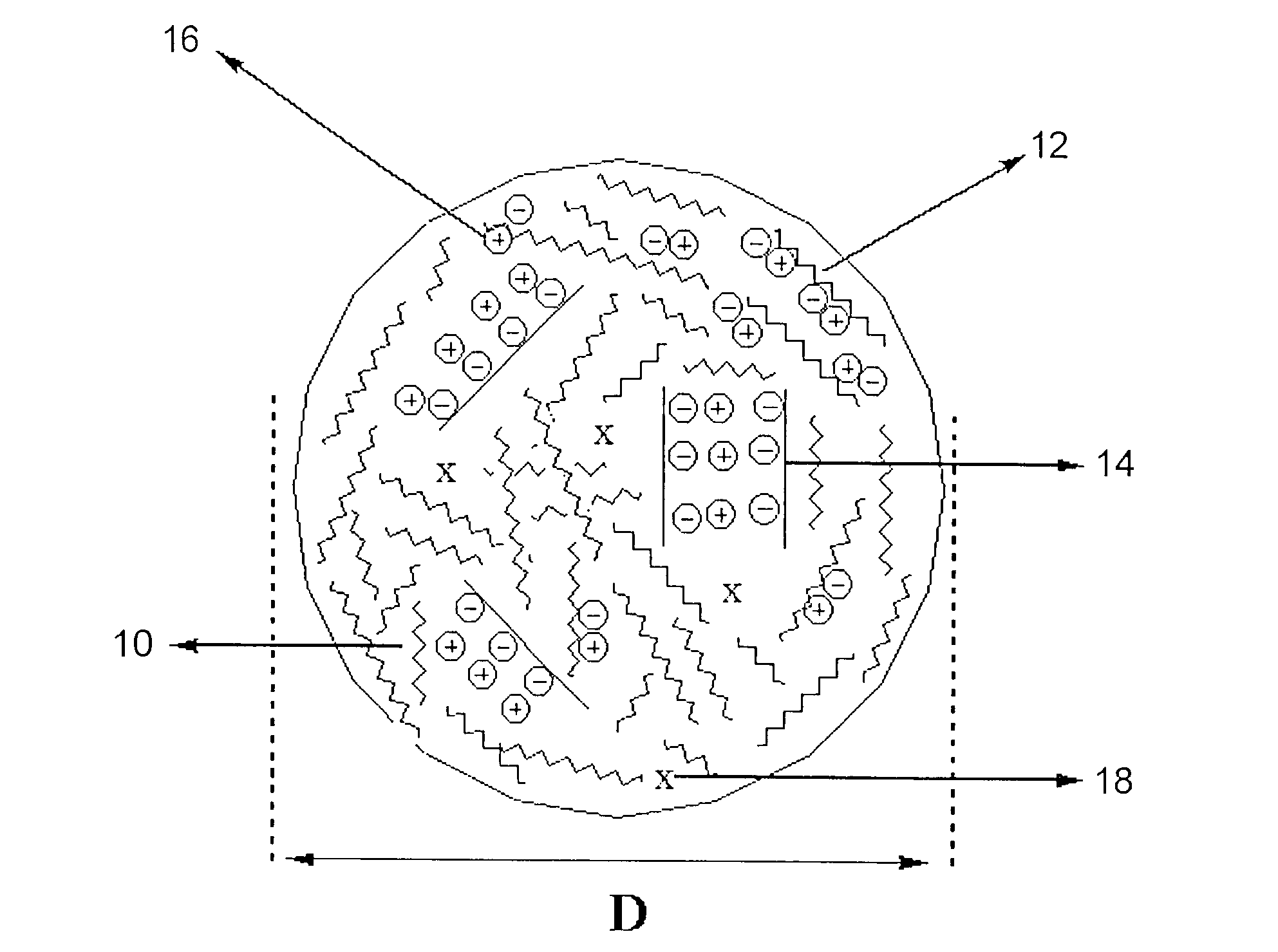Composite animal litter material and methods
a technology of animal litter and material, applied in the field of domestic animal disease detection, can solve the problems of lack of sophistication to diagnose animal diseases, ailments and conditions, and sensitivity to various diseases, and achieve the effects of reducing the number of animal litter samples, reducing and increasing the number of litter samples
- Summary
- Abstract
- Description
- Claims
- Application Information
AI Technical Summary
Benefits of technology
Problems solved by technology
Method used
Image
Examples
example 1
[0114]Several “recipes” are known and used for detecting blood in urine or faeces. However, the substrate that receives the chemically reactive agents also plays a significant role. In fact, it was found that certain solution compositions that were impregnated into paper supports (e.g. Whatman n° 4) resulting in paper-based indicators giving a sufficient color change response, were not effective solutions when applied substrates containing bentonite or other minerals. Such bentonite-containing substrates are notably less neutral than paper substrates, requiring adjustment of the composition of solutions to be dispersed into the bentonite-containing solutions.
[0115]Various solutions used in the following examples were developed and selected. It should be understood that these solutions are exemplary tests which were used in connection with an extrusion preparation method, and should not be seen as limiting.
example 2
[0116]Equipment: Coperion™ twin screw extruder, model KSK25 WLE™, with 25 mm diameter, L / D=40, 10 barrels.
[0117]Extrusion Conditions:
[0118]Extruder Temperature Profile
T ° C.Barrel 2-334Barrel 4110Barrel 5-6110Barrel 7-840Barrel 9-1040
[0119]Screw speed was 125 RPM.
[0120]Products:
[0121]Corn starch C* Gel 03420™ introduced into the extruder. Water was injected at the second barrel on a basis of 21.3% relative to the total mass.
[0122]The following solution was prepared and introduced at the ninth barrel:
[0123]Aqueous Solution
TMBCumeneHydrochloridehydro-CitricProduct(HC)peroxideLepidineacidNaOHpH%0.410.320.124.481.84.2
[0124]The extruded mixture is dried at 50° C. The product already absorbs one time its own weight of liquid after five contact seconds, which ensures effective urine absorption in short timeframe, facilitating contact with the reactive agents. In addition, the studies show that the product can absorb large amounts of liquid, approximately four times its own weight over an h...
example 3
[0126]The same installation as in Example 2 was used. The temperature profile in the extruder was the following:
[0127]Extruder Temperature Profile
T ° C.Barrel 2-334Barrel 4110Barrel 5-6110Barrel 7-840Barrel 9-1040
[0128]Corn starch C* Gel 03420™ (Cargill™) was used.
[0129]The following solution was prepared:
[0130]Aqueous Solution
Ascor-TMBCumeneLepi-CitricbicTensio-ProductHCHPdineacidNaOHAcidactivepH%0.330.260.183.611.190.030.414.7
[0131]The same operating conditions as in Example 2 were used. The product that was obtained was clear yellow and reacted when put in contact with blood.
PUM
 Login to View More
Login to View More Abstract
Description
Claims
Application Information
 Login to View More
Login to View More - R&D
- Intellectual Property
- Life Sciences
- Materials
- Tech Scout
- Unparalleled Data Quality
- Higher Quality Content
- 60% Fewer Hallucinations
Browse by: Latest US Patents, China's latest patents, Technical Efficacy Thesaurus, Application Domain, Technology Topic, Popular Technical Reports.
© 2025 PatSnap. All rights reserved.Legal|Privacy policy|Modern Slavery Act Transparency Statement|Sitemap|About US| Contact US: help@patsnap.com



